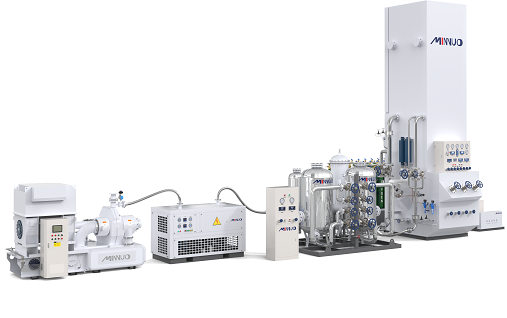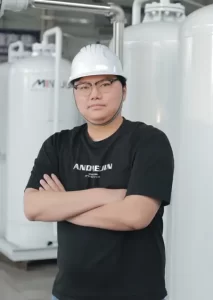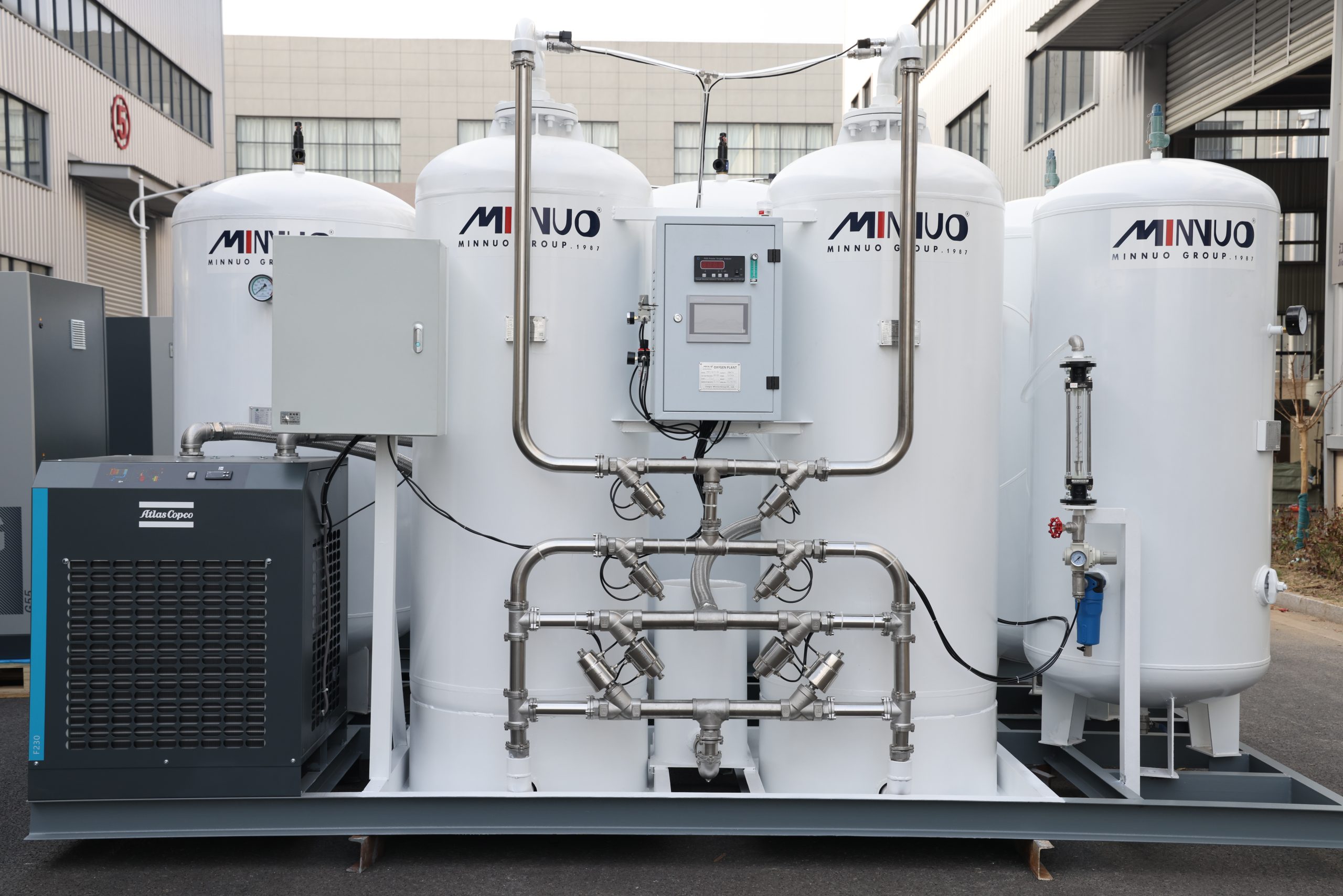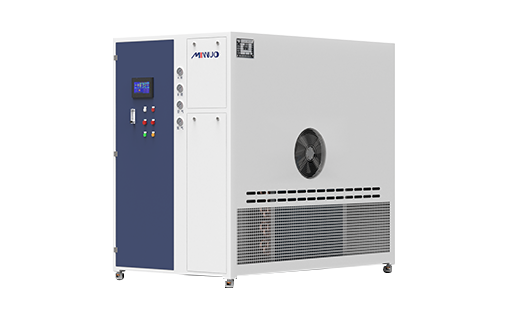As a crucial piece of industrial gas production equipment, nitrogen generators are increasingly applied across sectors such as chemicals, electronics, food, and pharmaceuticals. With advancements in technology and changes in market demand, nitrogen generation technology has evolved into a diverse classification system. This article will comprehensively analyze the classification of nitrogen generators from various perspectives, including technical principles, core characteristics, applicable scenarios, and market trends, to provide industry users with selection references and help companies optimize their production processes.
Nitrogen generators are classified into three types based on separation technology: cryogenic air separation, molecular sieve pressure swing adsorption (PSA), and membrane separation. Cryogenic air separation is suitable for high-purity (≥99.99%) and large-scale (output ranging from thousands to tens of thousands of cubic meters per hour) production scenarios, commonly used in petrochemical and metallurgy industries. PSA nitrogen generation is flexible and efficient, widely used in food packaging and electronics manufacturing. Membrane separation technology, known for its instant gas production and compact, portable equipment, is ideal for medium-to-low purity (90% – 98%) nitrogen applications, such as in tire manufacturing and coal mine safety.
1. Three Major Technical Classifications of Nitrogen Generators
Nitrogen generators are primarily classified into cryogenic air separation, pressure swing adsorption (PSA), and membrane separation based on the principle of air separation. Each technology has its own characteristics, making it suitable for different production needs.

1.1 Cryogenic Air Separation Nitrogen Generator
Technical Principle
Cryogenic air separation is a traditional technology that compresses and cools air to liquefy it. The process uses the boiling point differences between liquid oxygen (-183°C) and liquid nitrogen (-196°C) for distillation and separation.
- Process Steps:
- Compression: Air is compressed by an air compressor to increase temperature and density.
- Purification: Moisture, CO₂, dust, and other impurities are removed to prevent equipment blockage during low-temperature processes.
- Liquefaction: Cooled through heat exchangers and refrigeration equipment until air liquefies.
- Distillation: Oxygen and nitrogen are separated in a distillation column based on boiling point differences, yielding high-purity nitrogen (up to 99.999%).
Core Features
- High Purity and Large Scale: Ideal for large-scale continuous production (gas output ≥3500 Nm³/h) with strict purity requirements.
- High Investment and Long Cycle: Requires large compressors, heat exchangers, and distillation columns, leading to high infrastructure costs. Startup takes 12–24 hours due to extensive cooling/purification.
Applicable Scenarios
- Petrochemical and Metallurgy Industries: Used for oil cracking, catalytic reactions, metal smelting, and heat treatment to prevent oxidation and ensure product quality.
Market Positioning
Serves heavy industries (e.g., steel, petrochemical) with high nitrogen demand and strict purity requirements, though unsuitable for small-to-medium markets due to high costs.
1.2 Pressure Swing Adsorption (PSA) Nitrogen Generator
Technical Principle
Uses carbon molecular sieves to selectively adsorb oxygen and release nitrogen:
- Process Steps:
- Compressed air enters an adsorption tower where carbon molecular sieves adsorb oxygen at high pressure.
- When saturated, pressure is reduced to desorb oxygen, regenerating the sieves for the next cycle.
- Multiple towers operate alternately for continuous nitrogen production.
Core Advantages
- Flexible and Efficient: Startup time of 15–30 minutes; adjustable purity (95%–99.999%); lower energy consumption than cryogenic methods.
- Cost-Effective: Compact design, high automation, and lower investment (20%–50% less than cryogenic) for medium-to-small scale production (output ≤1000 Nm³/h).
- Easy Maintenance: No moving parts, reducing mechanical wear and simplifying routine checks.
Market Applications
Dominates global markets (over 50% share in 2024), used in:
- Food/Beverage: Packaging to prevent oxidation and extend shelf life.
- Pharmaceuticals: Protecting drug ingredients from oxidation during packaging.
- Electronics Manufacturing: Welding and atmospheric protection to improve production yields.
1.3 Membrane Separation Nitrogen Generator
Technical Principle
Relies on differing permeation rates of oxygen and nitrogen through hollow fiber membranes:
- Process: Compressed air passes through membranes; smaller oxygen molecules permeate faster, leaving nitrogen to accumulate.
Core Features
- Quick Response: Produces nitrogen within 3 minutes; simple structure with no valves or complex components, minimizing maintenance costs.
- Economic for Low Purity: Cost-effective for purity ≤98%, but higher costs than PSA for purity >98%.
Applicable Scenarios
- Tire Nitrogen Filling: Reduces tire oxidation and blowout risks with low-purity nitrogen.
- Coal Mine Fire Prevention: Injects nitrogen to lower oxygen levels and suppress spontaneous combustion.
Market Positioning
Popular in mobile and emergency applications (e.g., oil pipeline maintenance, field operations) due to compact size and portability.
2. Major Application Areas of Nitrogen Generators
2.1 Petroleum and Natural Gas
- Enhanced Oil Recovery: Injects nitrogen to maintain reservoir pressure and boost oil extraction.
- Pipeline Purging: Replaces combustible gases to ensure safety during construction and maintenance.
2.2 Chemical and Metallurgical
- Inert Protection: Prevents reactions in ammonia synthesis and polymer production.
- Metal Heat Treatment: Maintains nitrogen atmospheres to avoid oxidation during annealing and sintering.
2.3 Food and Pharmaceuticals
- Fresh Packaging: Displaces air to inhibit microbial growth and preserve food quality.
- Sterile Production: Protects pharmaceutical ingredients from air reactions during packaging.
2.4 Electronics and Semiconductors
- Welding Protection: Reduces solder joint oxidation in SMT reflow soldering.
- Clean Environment: Maintains contamination-free conditions in chip manufacturing.
2.5 Environmental Protection and New Energy
- Wastewater Treatment: Adjusts gas composition in aeration tanks to enhance microbial degradation.
- Lithium Battery Production: Provides oxygen-free, dry environments for electrode drying and packaging.

3. Market Trends and Selection Guide
3.1 Market Trend Analysis
- Technology Upgrade: PSA and membrane technologies are improving via adsorbent/membrane efficiency (e.g., new carbon molecular sieves for faster oxygen adsorption).
- Green Transformation: Rising demand for energy-efficient models (e.g., variable frequency compressors with PSA) to reduce carbon emissions.
- Mobility and Modularity: Mobile/modular units gain traction in emergency and remote settings (e.g., pipeline leak repair, outdoor construction).
- Regional Growth: Asia-Pacific (led by China, 40%+ market share) drives global demand due to industrialization.
3.2 User Selection Guide
| Factor | High Purity (>99.9%) | Medium Purity (95%–99.9%) | Low Purity (<98%) |
| Technology | Cryogenic or PSA | PSA | Membrane separation |
| Scale | Large-scale projects | Medium-to-small scale | Small-scale or mobile |
| Key Considerations | High initial cost, long-term ROI | Balanced cost-efficiency | Fast response, low maintenance |
| Ideal Scenarios | Petrochemical, metallurgy | Food packaging, electronics | Tire filling, emergency supply |
4. Conclusion
In summary, cryogenic air separation, PSA, and membrane nitrogen separation technologies each have their own strengths and weaknesses. Users should consider purity, scale, cost, and application requirements when choosing the right solution. As an industry-leading nitrogen generation equipment provider, MINNUO leverages in-depth research and practical experience across all three technologies to offer customized solutions that help businesses reduce costs and improve efficiency. For more information, feel free to visit our website or contact our technical team.






 sales2:+86 17506119168
sales2:+86 17506119168

